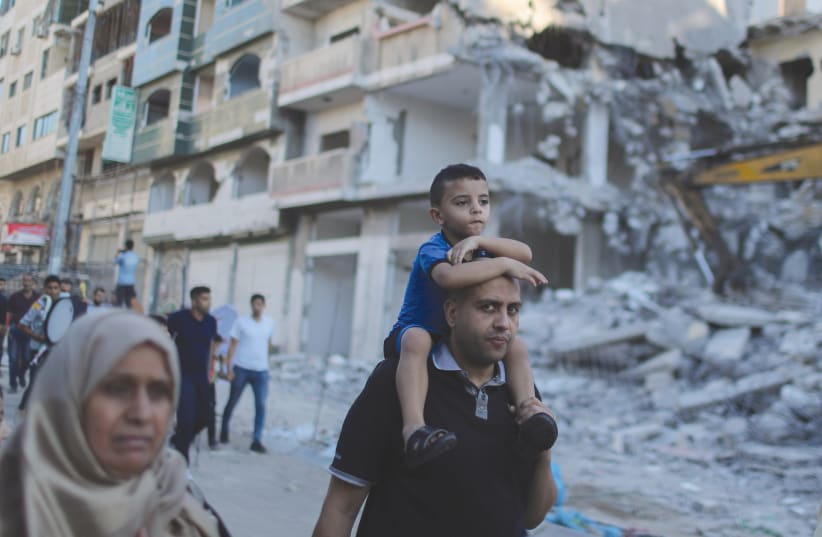Yes, I pose that well-worn saying as a question. To myself, to Palestinians and Israelis and to the world sitting in judgment. Lord knows I’ve had plenty of time to contemplate the answer, stuck inside my home in Toronto for 14 days, mandated by the government of Canada after returning from almost half a year in Florida. My mother’s condo there has become my second home, after spending three consecutive winters there.
Or is it my third home? For surely I need to count my birthplace, the family home in Rochester where I spent the first 18 years of my life, and still return to frequently. Each of these three places feels like home within hours of unpacking and settling in, no matter how long I’ve been away. I get into familiar routines, visit old haunts and set out to explore what’s new since my last residency.
The pandemic has certainly brought under the microscope the notion of home to myself and everyone around the globe. Locked down for days, weeks, months at a time – alone in isolation or with rooms full of bored, anxious, hyperactive children – having a comfortable place to shelter has never been so important. My favorite “soft news” show, CBS Sunday Morning, recently dedicated an episode to “home.” It featured one fascinating segment on England’s Museum of the Home in London, which traces the evolution of domestic spaces from the 1600s to the technological advancements of contemporary abodes – and another segment on a Texas-based company that actually uses one of those advancements – 3D printers – to quickly build concrete habitats that are stylish, durable and relatively inexpensive (www.cbsnews.com/video/3d-printed-homes-for-sale/).
“Sure could use some of those in countries full of displaced people,” I said to myself.
So. Israel. My fourth home. My spiritual home. Unlike the other three, conceptual. I do not own or rent property there. And though I have visited numerous times, lived there, worked there, fell in love and married there, it is likely that none of that would even have been necessary for me, as a Jew, to still feel an overwhelming connection, an inescapable bond.
THESE RANDOM thoughts on “home” now keep me awake at nights after exhaustive days/weeks watching the news, reading editorials and engaging in debates, following the latest uprising in the area. Even now, every word I choose to write is layered with meaning, open to different interpretations. My personal biases direct me to use a term like “uprising” rather than “war” or “terror attack.” And I use the word “area” because to call (all of) it Israel or even the “Holy Land” could be misconstrued and considered inflammatory. But one thing is certain: at the heart of the current conflict – and every conflict in the region since time began – is the concept of “home.”
In an opinion piece I recently read in our Globe and Mail titled “My Parents’ Fight for Their Home in Jerusalem Is a Fight for Our Rights,” Rasha Budeiri tells the heart-wrenching story of her grandparents who were forcibly displaced from their home in al-Baqaa in 1948 by the Israeli forces (please note that I am merely reporting, not endorsing). After being bounced around for years, they were finally offered housing in nearby Sheikh Jarrah – which in 1967 once again became part of Israel. They raised six children there, living peacefully with 27 other families and are now fighting a submission to the Israeli Ministry of the Interior to build 250 units for Jews in the neighborhood.
“Their legacy and love for the place was passed down,” writes Budeiri, along with “the strength and fastedness to fight a lengthy, exhaustive... threat intent on forcibly expelling the residents of Sheikh Jarrah… Leaving is not an option, nor is it acceptable.”
And, as we all know, the loss of homes is not just a theoretical talking point, but a very practical and tragic reality. We’ve heard repeatedly of the death toll from this latest conflict between Israel and Hamas. We can quote the number of lives sacrificed on both sides. But a lesser-known number, perhaps, is that, according to the Ministry of Public Works and Housing, at least 1,042 units in 258 (apartment) buildings in Gaza were destroyed and just over 14,500 units suffered damage. And by “damage” I’m sure we’re not talking about a leaky pipe or peeling paint. Whether you blame Israel or Hamas, the fact remains that homes were obliterated and people are suffering.
“Home is where the heart is,” to quote another well-worn saying, and here I am, spoiled for choice deciding which of four comforting places I’d like to settle back into. Yet for these displaced people, home is only where the heart is, and nowhere else.
The author is a Toronto-based writer and can be reached at ken.gruber5@gmail.com
